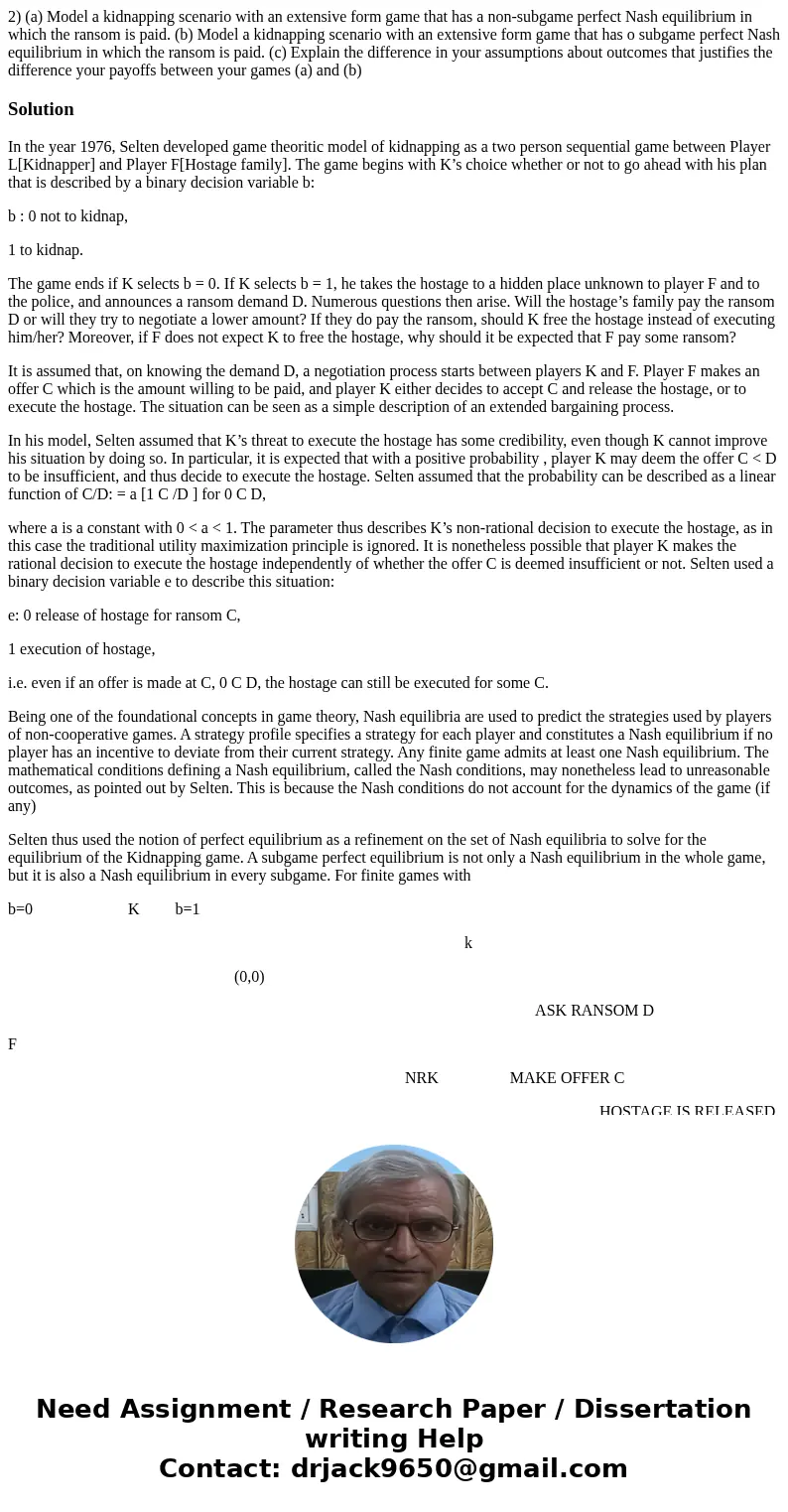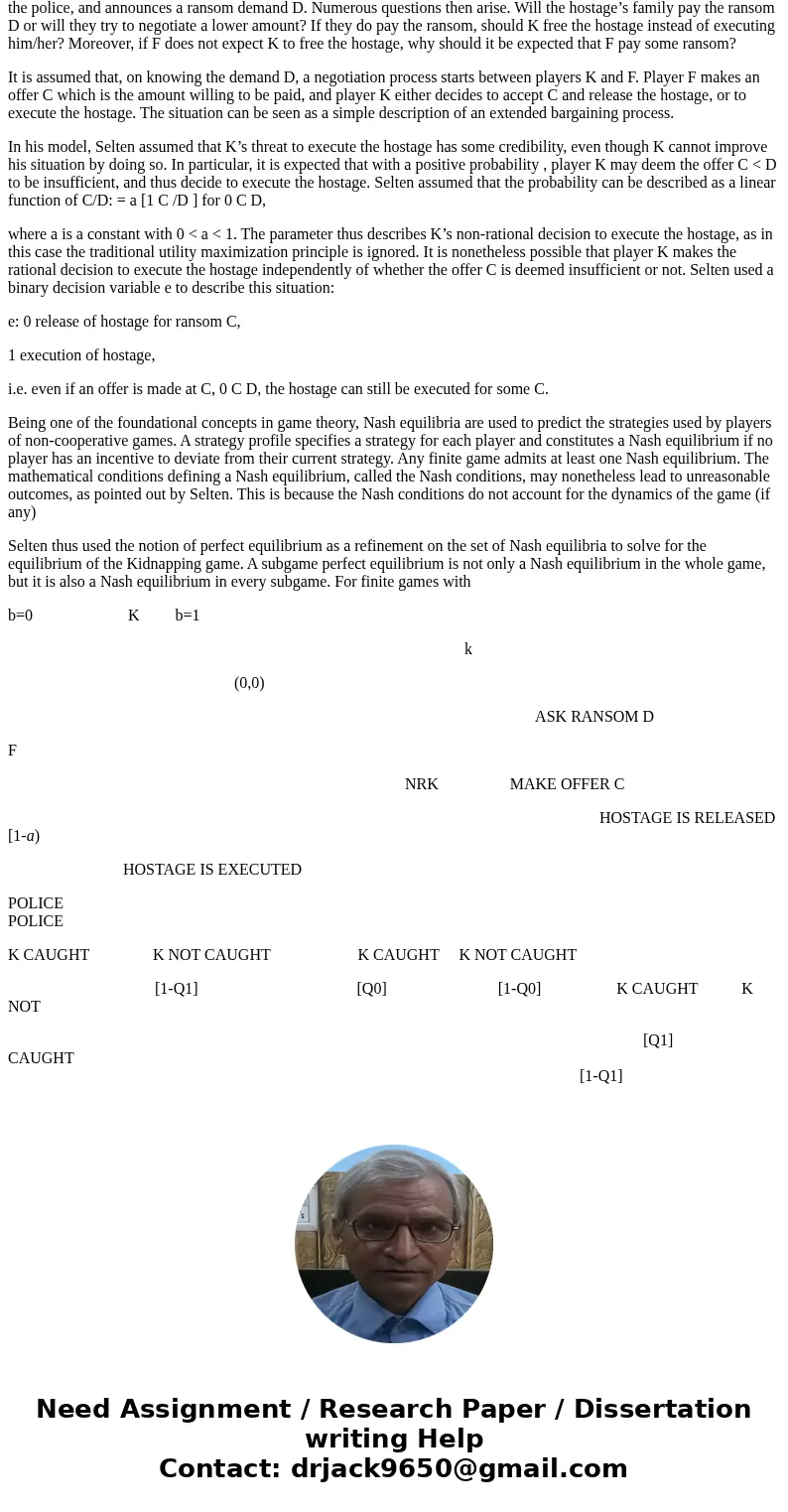2 a Model a kidnapping scenario with an extensive form game
Solution
In the year 1976, Selten developed game theoritic model of kidnapping as a two person sequential game between Player L[Kidnapper] and Player F[Hostage family]. The game begins with K’s choice whether or not to go ahead with his plan that is described by a binary decision variable b:
b : 0 not to kidnap,
1 to kidnap.
The game ends if K selects b = 0. If K selects b = 1, he takes the hostage to a hidden place unknown to player F and to the police, and announces a ransom demand D. Numerous questions then arise. Will the hostage’s family pay the ransom D or will they try to negotiate a lower amount? If they do pay the ransom, should K free the hostage instead of executing him/her? Moreover, if F does not expect K to free the hostage, why should it be expected that F pay some ransom?
It is assumed that, on knowing the demand D, a negotiation process starts between players K and F. Player F makes an offer C which is the amount willing to be paid, and player K either decides to accept C and release the hostage, or to execute the hostage. The situation can be seen as a simple description of an extended bargaining process.
In his model, Selten assumed that K’s threat to execute the hostage has some credibility, even though K cannot improve his situation by doing so. In particular, it is expected that with a positive probability , player K may deem the offer C < D to be insufficient, and thus decide to execute the hostage. Selten assumed that the probability can be described as a linear function of C/D: = a [1 C /D ] for 0 C D,
where a is a constant with 0 < a < 1. The parameter thus describes K’s non-rational decision to execute the hostage, as in this case the traditional utility maximization principle is ignored. It is nonetheless possible that player K makes the rational decision to execute the hostage independently of whether the offer C is deemed insufficient or not. Selten used a binary decision variable e to describe this situation:
e: 0 release of hostage for ransom C,
1 execution of hostage,
i.e. even if an offer is made at C, 0 C D, the hostage can still be executed for some C.
Being one of the foundational concepts in game theory, Nash equilibria are used to predict the strategies used by players of non-cooperative games. A strategy profile specifies a strategy for each player and constitutes a Nash equilibrium if no player has an incentive to deviate from their current strategy. Any finite game admits at least one Nash equilibrium. The mathematical conditions defining a Nash equilibrium, called the Nash conditions, may nonetheless lead to unreasonable outcomes, as pointed out by Selten. This is because the Nash conditions do not account for the dynamics of the game (if any)
Selten thus used the notion of perfect equilibrium as a refinement on the set of Nash equilibria to solve for the equilibrium of the Kidnapping game. A subgame perfect equilibrium is not only a Nash equilibrium in the whole game, but it is also a Nash equilibrium in every subgame. For finite games with
b=0 K b=1
k
(0,0)
ASK RANSOM D
F
NRK MAKE OFFER C
HOSTAGE IS RELEASED [1-a)
HOSTAGE IS EXECUTED
POLICE POLICE
K CAUGHT K NOT CAUGHT K CAUGHT K NOT CAUGHT
[1-Q1] [Q0] [1-Q0] K CAUGHT K NOT
[Q1] CAUGHT [1-Q1]


 Homework Sourse
Homework Sourse